
Introduction to Diodes: A Comprehensive Guide by Regent Electronics
Diodes are among the most fundamental components in electronics, yet their applications span from simple rectification to complex signal processing. In this guide, we’ll take you through the essentials of diodes, including their working principles, symbols, construction, types, and applications, all while optimizing for a seamless reading experience.

What is a Diode?
A diode is a two-terminal electronic component that allows current to flow in only one direction. With minimal resistance in one direction and extremely high resistance in the other, diodes are integral to modern electronics.
The term “diode” originates from the prefix “Di-” (two) and “Ode” (electrodes), signifying a device with two electrodes:
- Anode (+) – Positive terminal
- Cathode (-) – Negative terminal
Constructed primarily from semiconductor materials like silicon or germanium, diodes exhibit unidirectional behavior, making them ideal for rectification and other critical functions.
Symbol of a Diode
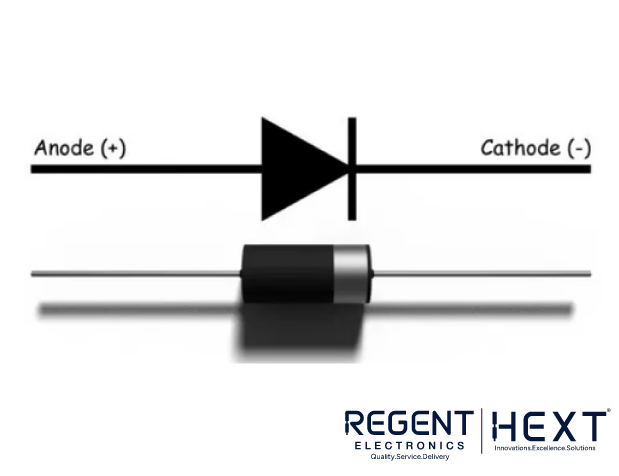
The diode’s symbol consists of a triangle pointing towards a line.
- Anode (P-side): Left of the triangle
- Cathode (N-side): Line at the right of the triangle
This directional arrow indicates the direction of current flow during forward bias.
Construction of a Diode

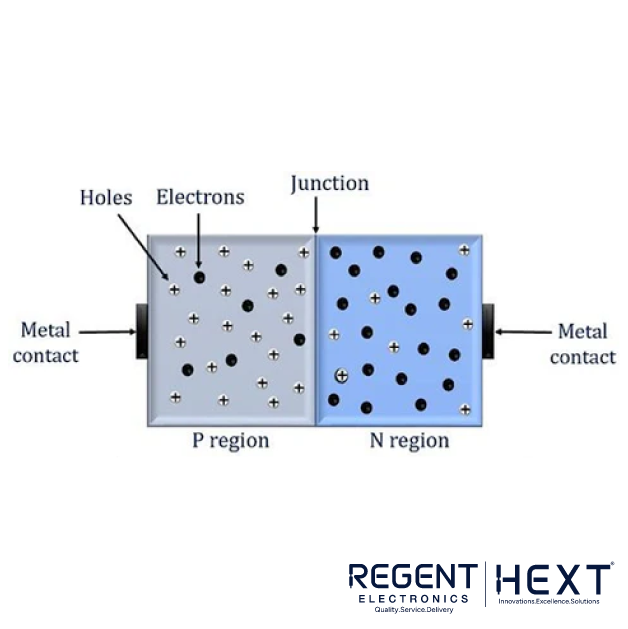
Diodes are fabricated using semiconductors, materials that can act as either conductors or insulators based on applied voltage. Silicon is the most commonly used material due to its wide availability and high-temperature tolerance.
Semiconductor Types
- Intrinsic Semiconductors:
- Pure semiconductors with equal numbers of electrons and holes.
- Extrinsic Semiconductors:
- Formed by adding impurities (doping) to increase charge carriers, creating:
- P-type (positive charge): Holes dominate.
- N-type (negative charge): Electrons dominate.
- Formed by adding impurities (doping) to increase charge carriers, creating:
A P-N junction forms when P-type and N-type semiconductors are joined, creating the foundation of diode functionality.
Working of a Diode
Biasing Conditions
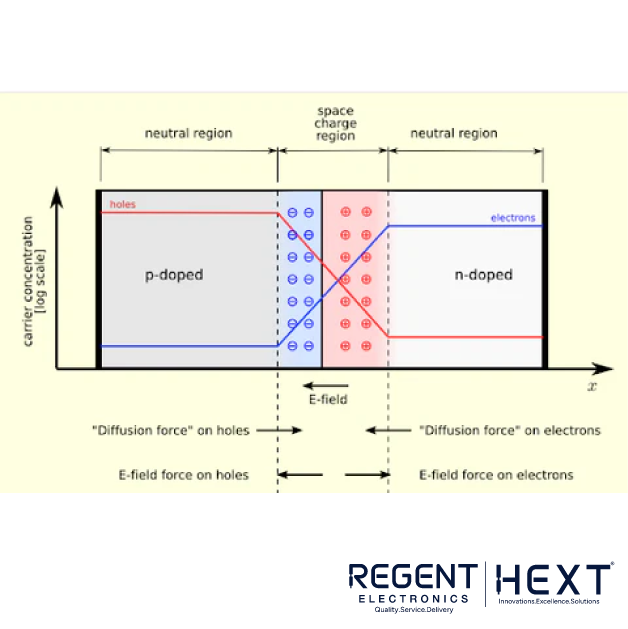
- Equilibrium (Zero Bias):
- No external voltage applied; no net current flows.
- Forward Bias:
- The anode connects to the positive terminal, and the cathode connects to the negative terminal. Current flows as the external voltage overcomes the potential barrier.
- Reverse Bias:
- The cathode connects to the positive terminal, and the anode connects to the negative terminal. Current flow is minimal due to minority charge carriers, resulting in reverse saturation current.

Types of Diodes
1. Light Emitting Diode (LED):
Emits light when current flows. Widely used in display panels, indicators, and lighting.
2. Zener Diode:
Operates in reverse bias for voltage regulation. Common in power supply circuits.
3. Avalanche Diode:
Designed to handle high breakdown voltages, ideal for surge protection.
4. Schottky Diode:
Known for low forward voltage drop and fast switching.
5. Photo Diode:
Converts light into electrical signals, commonly used in sensors and cameras.
6. Tunnel Diode:
Exhibits negative resistance and is used in oscillators and high-frequency applications.
Applications of Diodes
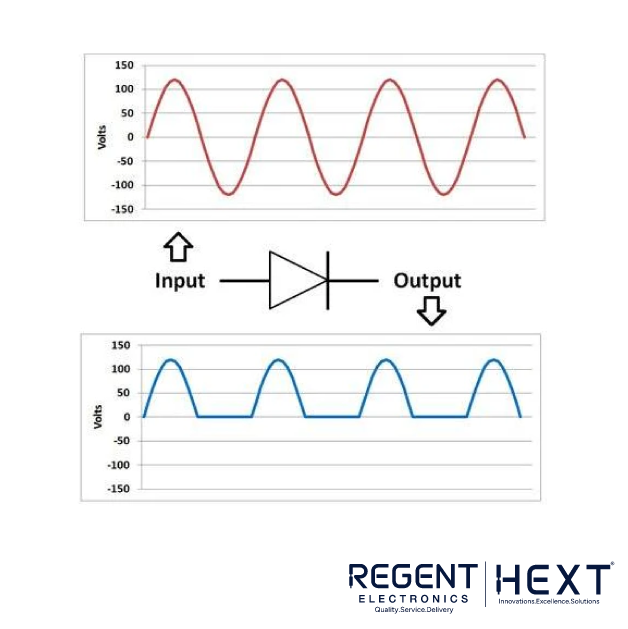
- Rectification:
- Converts AC to DC in power supplies.
- Half-Wave Rectifier: Allows current during one half-cycle.
- Full-Wave Rectifier: Converts both halves of the AC cycle into DC using four diodes in a bridge configuration.
- Converts AC to DC in power supplies.
- Clipping Circuits:
- Limit voltage levels by clipping parts of the input signal.
- Clamping Circuits:
- Shift signal levels by adding or removing a DC component.
- Reverse Current Protection:
- Prevents damage from reverse currents by placing a diode in series with the power supply.
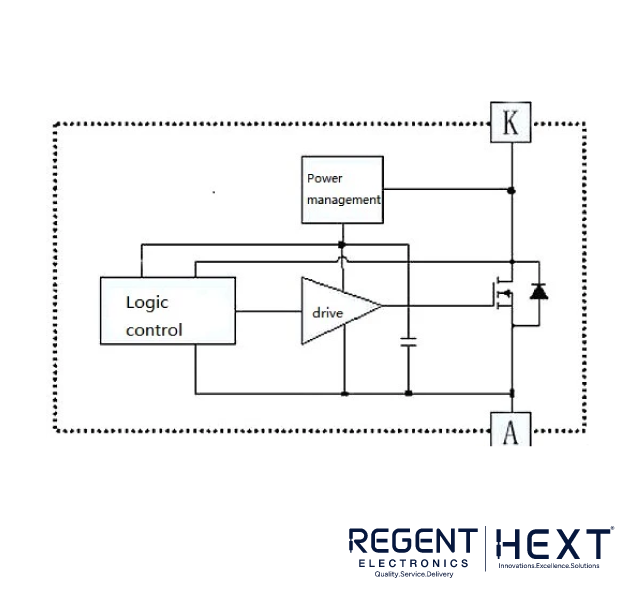

Why Choose Regent Electronics for Your Diode Needs?
At Regent Electronics, we pride ourselves on offering high-quality diodes tailored for diverse applications. Whether you need standard rectifier diodes, specialized Zener diodes, or cutting-edge LEDs, we ensure reliability, performance, and affordability.
Optimize your circuits with Regent Electronics’ wide range of diodes, crafted for efficiency and precision. Contact us today to find the perfect diode for your next project!
